John Kane
Patient-independent Schizophrenia Relapse Prediction Using Mobile Sensor based Daily Behavioral Rhythm Changes
Jun 25, 2021
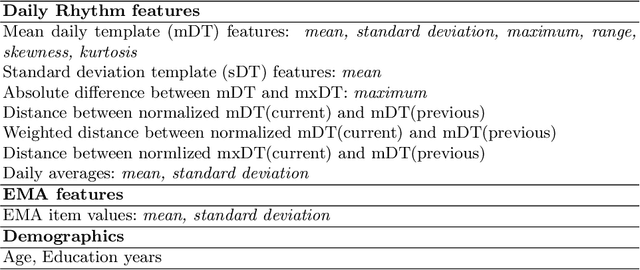
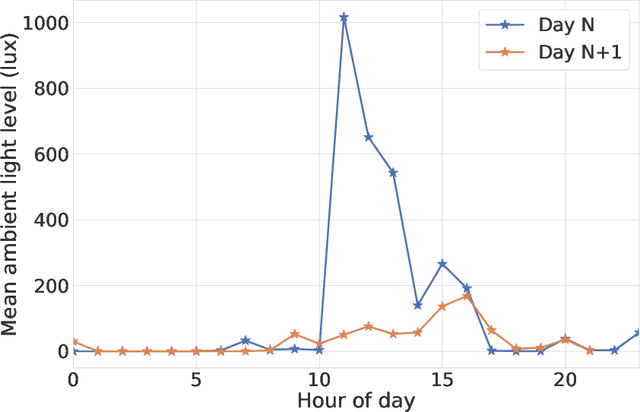

Abstract:A schizophrenia relapse has severe consequences for a patient's health, work, and sometimes even life safety. If an oncoming relapse can be predicted on time, for example by detecting early behavioral changes in patients, then interventions could be provided to prevent the relapse. In this work, we investigated a machine learning based schizophrenia relapse prediction model using mobile sensing data to characterize behavioral features. A patient-independent model providing sequential predictions, closely representing the clinical deployment scenario for relapse prediction, was evaluated. The model uses the mobile sensing data from the recent four weeks to predict an oncoming relapse in the next week. We used the behavioral rhythm features extracted from daily templates of mobile sensing data, self-reported symptoms collected via EMA (Ecological Momentary Assessment), and demographics to compare different classifiers for the relapse prediction. Naive Bayes based model gave the best results with an F2 score of 0.083 when evaluated in a dataset consisting of 63 schizophrenia patients, each monitored for up to a year. The obtained F2 score, though low, is better than the baseline performance of random classification (F2 score of 0.02 $\pm$ 0.024). Thus, mobile sensing has predictive value for detecting an oncoming relapse and needs further investigation to improve the current performance. Towards that end, further feature engineering and model personalization based on the behavioral idiosyncrasies of a patient could be helpful.
Data-driven Detection and Analysis of the Patterns of Creaky Voice
May 31, 2020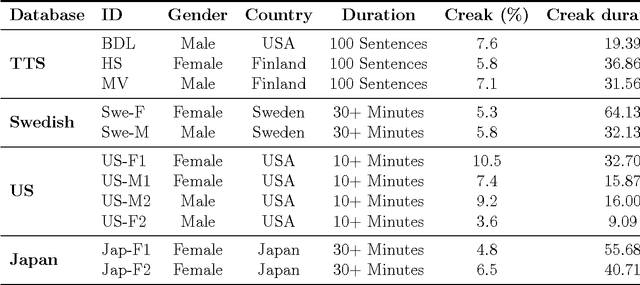

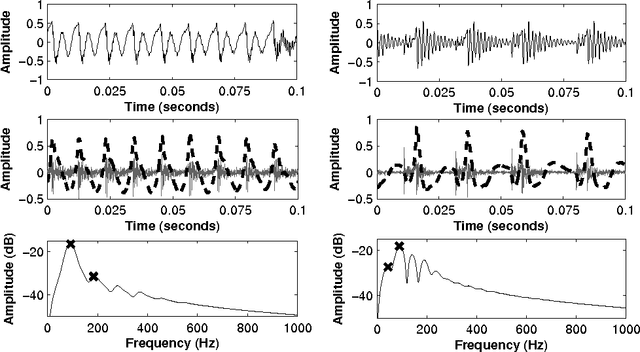
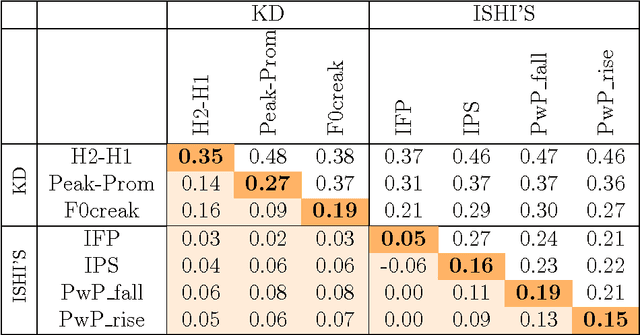
Abstract:This paper investigates the temporal excitation patterns of creaky voice. Creaky voice is a voice quality frequently used as a phrase-boundary marker, but also as a means of portraying attitude, affective states and even social status. Consequently, the automatic detection and modelling of creaky voice may have implications for speech technology applications. The acoustic characteristics of creaky voice are, however, rather distinct from modal phonation. Further, several acoustic patterns can bring about the perception of creaky voice, thereby complicating the strategies used for its automatic detection, analysis and modelling. The present study is carried out using a variety of languages, speakers, and on both read and conversational data and involves a mutual information-based assessment of the various acoustic features proposed in the literature for detecting creaky voice. These features are then exploited in classification experiments where we achieve an appreciable improvement in detection accuracy compared to the state of the art. Both experiments clearly highlight the presence of several creaky patterns. A subsequent qualitative and quantitative analysis of the identified patterns is provided, which reveals a considerable speaker-dependent variability in the usage of these creaky patterns. We also investigate how creaky voice detection systems perform across creaky patterns.
 Add to Chrome
Add to Chrome Add to Firefox
Add to Firefox Add to Edge
Add to Edge